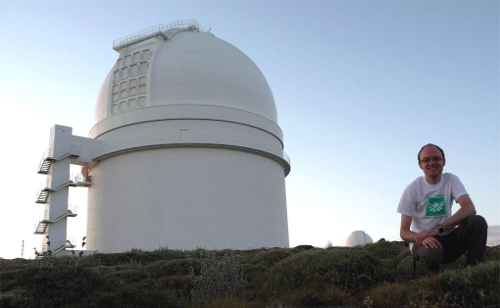
What's it like to use a telescope at an observatory?

The Gemini 8-meter telescope
|
Observatories are located in some of the most remote places on Earth. Scientists need to be far away from the city lights to see the faintest stars and galaxies. Telescopes are often built on the tops of mountains and in desert regions, high above the moisture in the atmosphere. Dark dry skies and good weather are the ideal conditions for learning about the universe.
Astronomers typically spend a few nights at a time, up to several times per year using the telescopes at these isolated observatories. With modern digital cameras and other scientific instruments, scientists can gather so much information in such a short time that they spend the rest of the year just trying to understand it.
Several researchers who are gathering data to support NASA's Kepler satellite are sending virtual postcards from observatories around the globe to Windows to the Universe, describing their experiences. Take a look at the messages linked below, and check back often for new postcards!
 Kepler Field from the dark sky park from Joanna Molenda-Zakowicz, May 6, 2010
Kepler Field from the dark sky park from Joanna Molenda-Zakowicz, May 6, 2010
 Watching stars pulsate from Tenerife from Katrien Uytterhoeven, June 5, 2010
Watching stars pulsate from Tenerife from Katrien Uytterhoeven, June 5, 2010
 Winter observing in July from Katrien Uytterhoeven, July 4, 2010
Winter observing in July from Katrien Uytterhoeven, July 4, 2010
 Team Observing for Two Weeks from Orlagh Creevey, July 26, 2010
Team Observing for Two Weeks from Orlagh Creevey, July 26, 2010
 Stellar Properties and Lone Star Monsoons from Katrien Uytterhoeven, August 1, 2010
Stellar Properties and Lone Star Monsoons from Katrien Uytterhoeven, August 1, 2010
 Staring at Kepler's eclipsing binaries from Steven Bloemen, June 18, 2011
Staring at Kepler's eclipsing binaries from Steven Bloemen, June 18, 2011
 Measuring the sizes of Kepler stars from Daniel Huber, July 06, 2011
Measuring the sizes of Kepler stars from Daniel Huber, July 06, 2011














